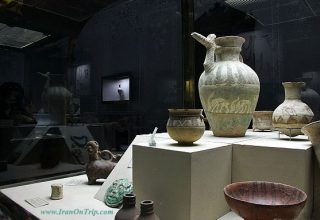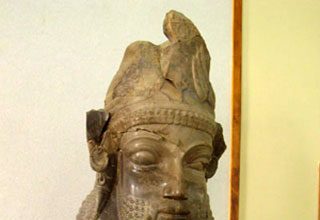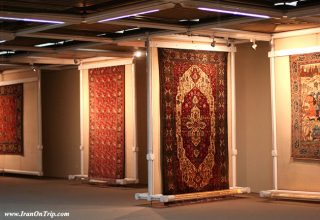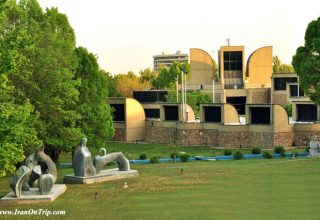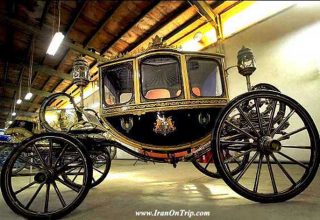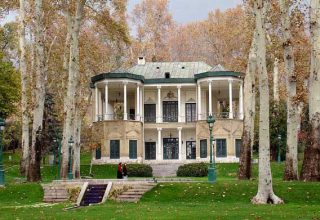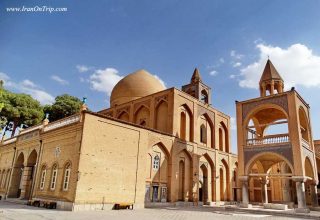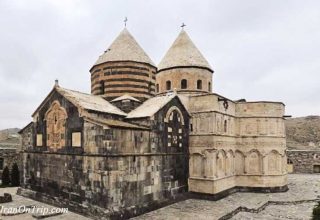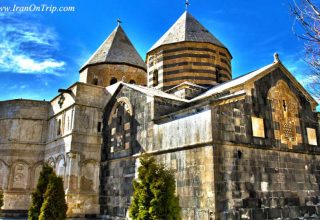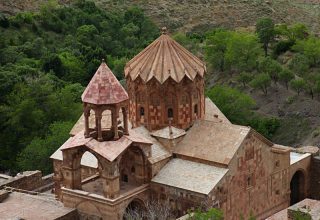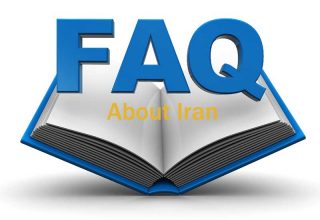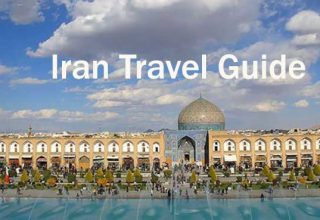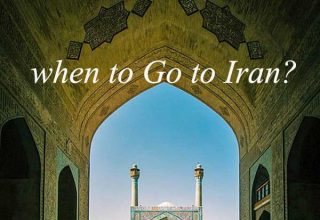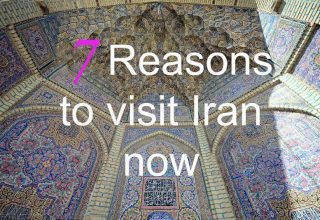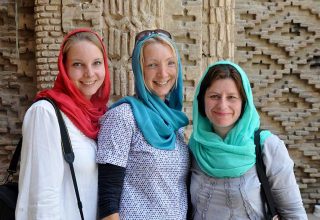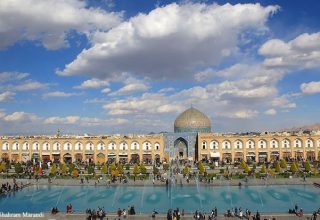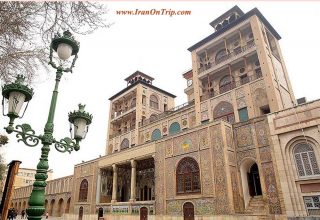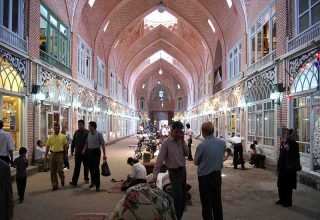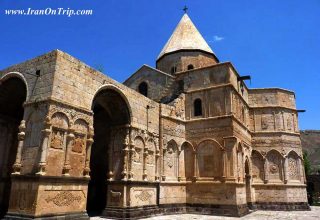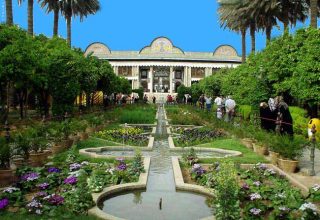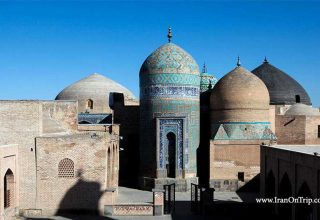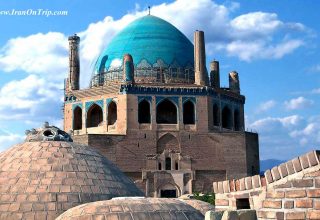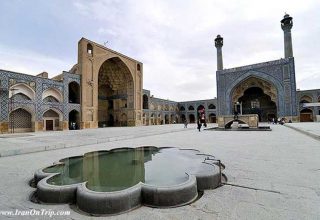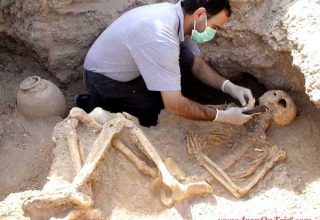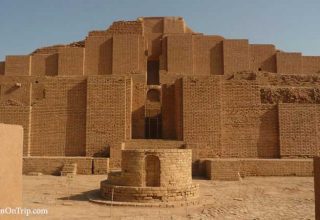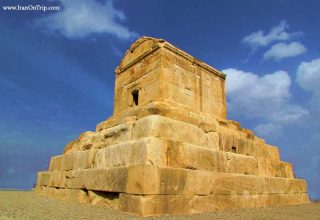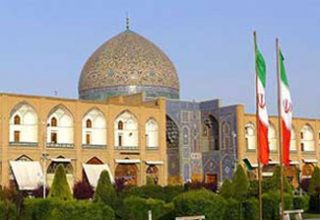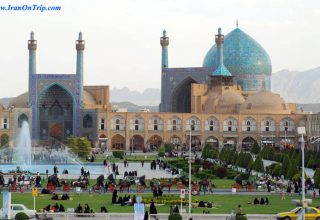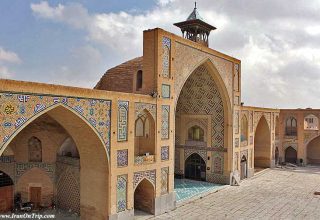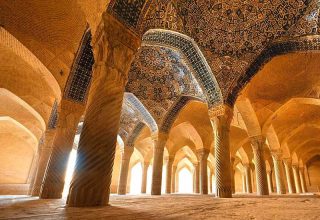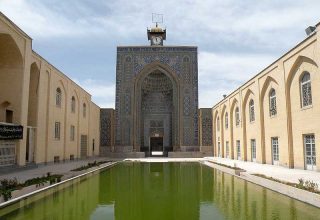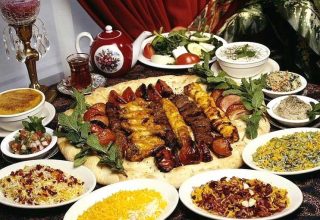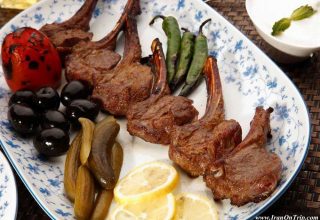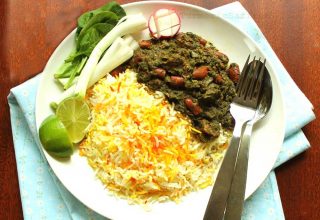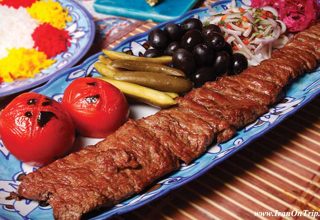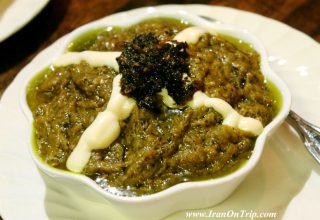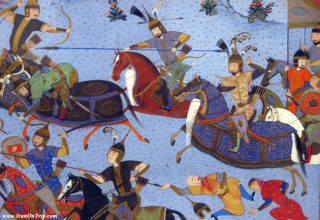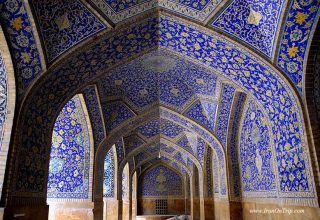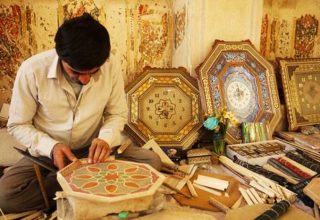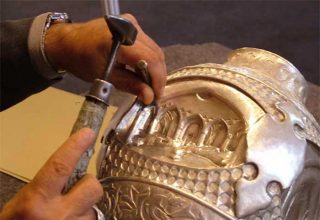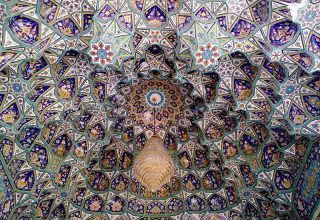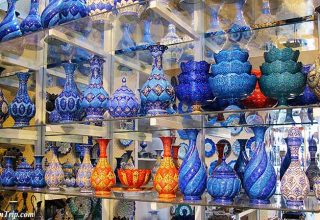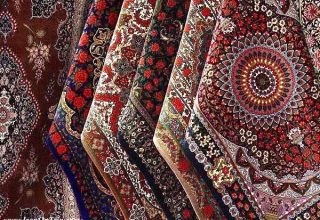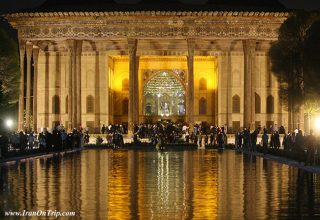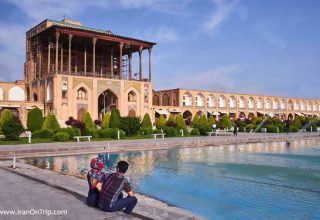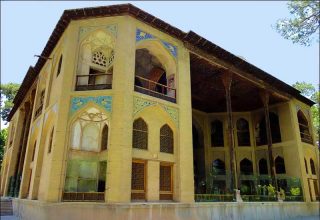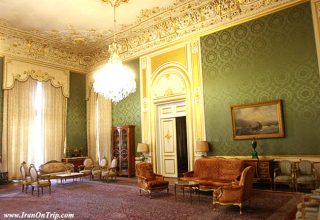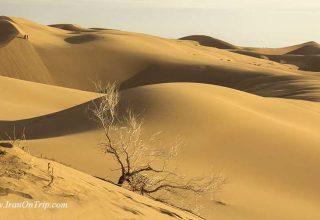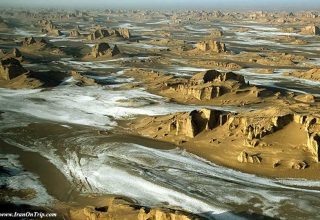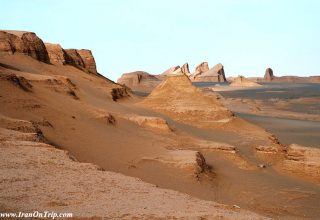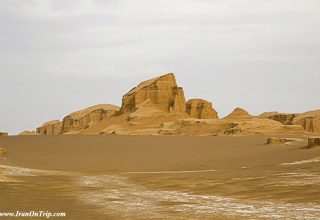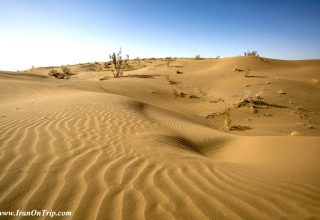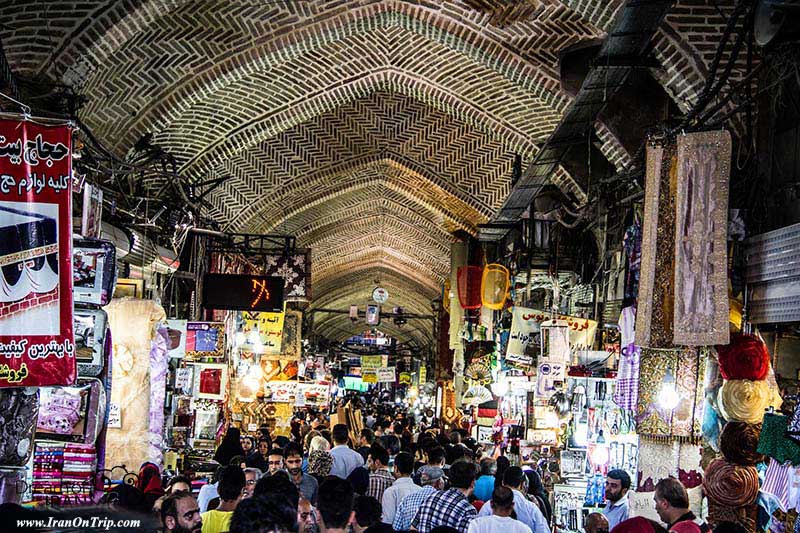
Markets of the Islamic cities are one of the greatest achievements of the Islamic civilization and are not to be found in other countries. At the time Islam ruled over a large part of the world, Bazaars had become a common feature of the cities governed by Islam. Economy and religion are the two principal pillars of the Islamic Bazaars, which symbolize their difference from other markets.
Upon mentioning the word BAZAAR, any Easterner unconsciously is reminded of a place where the ceiling lets beautiful rays of sun shine from the ceiling downward at given intervals. On either side of it is situated a collection of stores. The delicious smells of various spices, the cries of sellers of goods and their customers, and the rhythmic sound of hammers of artists are associated in the mind.
The word “Bazaar” was used in the Sassanid Pahlavi texts in the form of WAZAR, and in combinations such as WAZARG (of the bazaar), WAZARGAN (business person), WAZARGANIEH (Commercial), WAZARBAD (head of the bazaar).Afterwards, this Farsi word was introduced in other languages and found similar linguistic application. As a sample the equivalent of the word BAZAAR is given below several living languages, which are in fact the same word in other forms:English: BAZAAR, French: BAZAR, Portuguese-Spanish: BAZAR, Arabic- Hungarian: Pazar, and VAZAR, Indian: BAZAR, Turkish: Bazar and Pazar.It would appear that the universal fame of the Constantinople markets and the significant part they played in the trade between countries and, in particular, the trade between West and East had an important part in the widespread usage of this word in European languages.A bazaar is a type of marketplace, although many – such as Tehran’s Grand bazaar – fulfill many additional functions rather than merely trade. Throughout its history, the Grand bazaar has played host to banks and financiers, mosques and guest houses.Tehran Grand Bazaar is a historical market situated in the capital of Iran,Tehran.Traditionally, the Tehran bazaar was split into corridors, each specialising in different types of goods, including copper, carpets, paper, spices, and precious metals, as well as small traders selling all types of goods. Today, modern goods are available as well, in addition to the many traditional corridor traders that still survive.The Grand Bazaar is located in southern Tehran; its many corridors are over 10 km in length. There are several entrances, some of which are locked and guarded at night.While the current bazaar is most associated with the 19th century onwards, its roots go back much further
Tehran, one of the northern villages of the historic city of Rey, had an indeterminate existence prior to Islam. After Islam, where reference is made to Doulab and Aliabad and Tarasht no mention is made of Tehran.Ibn Balkhi for the first time refers in 510/1131 A.D. to Tehran when describing the good quality of its pomegranates. Then little by little the name of the greatest present city of Iran is mentioned in history and historical geography texts.
After the Mongul, Ilkhanid, and Timurid era, Tehran gained fame during the Safavids period as a village comprising 12 small districts not at peace with each other, whose inhabitants passed their time by marauding and stealing the properties of caravans.
What may be extracted from historic texts is that the first houses of Tehranis were underground, mostly in the form of refuges in which the inhabitants concealed the properties and foodstuffs they plundered. Around this pleasant, habitable, yet warm village, beautiful gardens with tall and mingled plane trees gradually were grown. As a result, a number of European travellers referred to it as the city of plane trees, just as Istanbul was referred to as the city of Cypress.Following the rise of the Qajar dynasty and its choice of Tehran as the Capital, its dignity and glory increased day by day until today that it is one of the greatest cities of the world.
Trade and Early Bazaars in Tehran
The area around Tehran has been settled since at least 6000 BC, and while bazaar-like construction in Iran as a whole has been dated as far back as 4000 BC, Tehran’s bazaar is not this old. It is hard to say exactly when the “bazaar” first appeared, but in the centuries following the introduction of Islam, travellers reported the growth of commerce in the area now occupied by the current bazaar. The Grand bazaar is a continuation of this legacy.Researchers indicate that a portion of today’s bazaar predated the growth of the village of Tehran under the Safavids’ dynasty, although it was during and after this period that the bazaar began to grow gradually.Western travellers indicated that by 1660 BC and beyond, the bazaar area was still largely open, and only partially covered.
Development of the Grand Bazaar
Despite relying heavily on this historical legacy, much of the bazaar itself was constructed fairly recently. The oldest remaining buildings, walls and passages in the bazaar today very rarely exceed 400 years, with many being constructed or rebuilt within the last 200 years. In this sense, the current grand bazaar is one of the newest in the Middle East.The bazaar grew as a “city within a city” for much of the 19th century, and was largely able to expand itself without much outside interference. However, as Tehran began to grow exponentially in the early 20th century under Reza Shah, the changes brought by this rapid expansion saw much of the bazaar (including such areas as the Perfume Sellers’ Bazaar and Moat Bazaar) disappear. The old sections of the bazaar are generally similar in architectural style, while parts added in the 20th century often look markedly different; critics say that less care was taken in the construction of later sections. However, in an effort to increase the prestige of the bazaar, projects to beautify the bazaar through the use of plaster moulding and decorative brickwork were undertaken late in the 20th century.
It is probable that a small section of the present day Bazaar complex in Tehran was the original nucleus of the Tehran habitable village prior to the Safavids and Shah Tahmasb period. During the reign of this king, along with the building of towers and fortifications the Bazaar was also built up. At the time part of the Bazaar was enclosed and the other part was open. In this connection, Thomas Herbert who visited the Bazaar of Tehran in 1039/1660 A.D. described it in the following two fashions:
The original Bazaar of Tehran stretched from Sabzeh Meidan to Molavi Avenue, and two well-known Chaharsous (crossway), named the Big and the Little Chaharsous were built in 1228/1849 and 1243/1864 respectively. Gradually, caravanserais, timchehs (arcades), SARAs, BARANDAZ, GOZARs and DALANs (closed bazaars, houses, docks, passages and corridors) were constructed in the Bazaar. Included in this category are: the Mahdieh Timcheh, with a two story quadrangle building which is probably the oldest Timcheh of Tehran; Saray-e-Amir, known as Atabakieh with 336 chambers that was built in 1267/1888 by the order of Mirza Taghi Khan Amir Kabir; the Rasteh Bazaar of Mirza Taghi Khan that was built in 1268/1889, with two rows of hat makers and shoe-makers; Hajeb-od-doleh Timcheh, remaining from Haj Ali Khan Hajeb-od-doleh (Etemad-os-Saltaneh); and Nasser-ed-Din Shah’s Executioner, a very famous and most beautiful Timcheh of Iran.
All were built in the lower Bazaar of Tehran. Thus, the wide and expanded network of the Bazaar of Tehran was extended from the south of Arg up to Molavi Avenue. In this expanded network, the components of the Bazaar (Timchehs, houses, rows, corridors, docks, caravanserais) appeared together with buildings such as mosques, schools, bath-houses with beautiful patterns. In the course of expansion of the city and changes in city structures, a number of passages disappeared. From the 36 Bazaars of that time, a number of bazaars, including the Khandag (moat) Bazaar, the Perfume Sellers Bazaar, the Chicken Sellers Bazaar and the Galoubandak Bazaar disappeared with the avenue constructions at the time of Reza Shah. A number of these bazaars, including the can makers and the goldsmiths, were shortened and rendered smaller. Likewise, a number of them gave way to other occupations due to changes in the mode of life of the society. Such were the Bazaars of Weavers and the Boat Scribers which were close to the leather Bazaar on the southeast of the Larger Chaharsou. The most important existing bazaars of Tehran include Udlajan, cloth sellers, shoemakers, goldsmiths, ironsmiths, copper smiths, Abbas-Abad, Bein-ol-Haramein, Cheheltan (the oldest row dating to Fath-Ali Shah’s reign), the Larger Chaharsou, Masjed Jame, Hazrati, Pachenar etc.
In the buildings of the rows and other units related to the Tehran Bazaar complex, we witness the creation of functional and beautiful spaces of architecture, as regards the patterns, volume and facade. This phenomenon, unfortunately, suffered from the beginning of the 14th/20th century onwards because of the unharmonious growth of the Bazaar, with unprincipled alterations and the use of materials without harmony. The Bazaar has suffered greatly. The attention paid by designers and architects to the creation of coverage over certain sections of the Bazaar, including the crossways and specifically the Timchehs, for the purpose of eliminating monotonousness is quite apparent.
In this connection various methods have been employed. These include decorative portals of houses and Timchehs, decorative and colourful plaster moulding under the dome-like ceilings which include various plant designs and beautiful brick decorations.
Here is a comment by Ursels, a European tourist who visited the Bazaar of Tehran in 1261/1882:
“From Sabzeh Meidan the Bazaar may be entered from two glorious entrances. The Bazaar in itself was one city as regards the population. It took in during the day twenty to twenty-five thousand people… The wide and labyrinthine passage ways stood under brick domes with small windows.”
The Grand bazaar is still an important place of commerce for Tehranis, Iranians, travelling merchants and – increasingly – tourists. However, much of the trade and finance in the city has moved to the north of the city, leaving the bazaar somewhat decreased in importance. Still, in addition to the traditional goods on sale, the market for watches and local jewelry is apparently growing, most likely for the benefits of tourists. As is in keeping with the market spirit, tourists are encouraged to haggle. The bazaar sees the peak of its business at midday and between 5 and 7 in the evening.
As of October 2005, plans are in place to construct a hotel in the southern section of the bazaar for the benefit of tourists, in a bid to make the bazaar more hospitable and to regain some of its importance.
Museums of Iran – Museums of Tehran – Iran Museums – Tehran Museums


